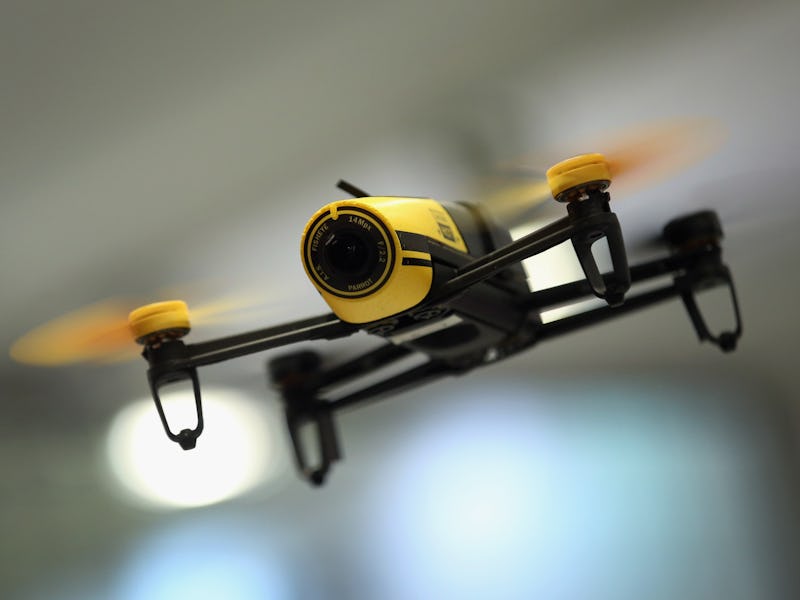Report Finds Most Drone "Close Calls" Happen Above 400-Foot Ceiling
Can software limits keep wayward drones out of trouble?

On January 30, a jet at 19,500 feet on its way into Atlanta spied a white drone just two hundred feet below — if it was a civilian quadcopter, that’s an incredible height. That was one of 582 reported drone incidents across the United States, from the end of August 2015 through January 2016, the Federal Aviation Administration reported Friday. If “incidents” feels like a catch-all term, it is: The FAA lumps together the relatively mundane, like a pilot spotting a drone, to the more serious “evasive action taken” scenarios. Of all the events, about a third were “close encounters” — that is, potentially dangerous — according to Bard College’s drone research group. Though the majority weren’t hazardous, they were high. The median incidental altitude? Roughly 2,000 feet up.
Considering the sheer number of drones at play, that’s a fairly low incident-per-device ratio. There are about 2.5 million drones, both commerical and non-, in the United States; flying them are 400,000 registered civillian pilots. And, as of yet, there have been no harmful collisions reported between UAV and a piloted aircraft. As the numbers swell, some aviation experts and engineers argue it’s a matter of not if, but when.
What stands out now is that wayward drones have an altitude problem. For every 10 incidents, the Bard analysis notes, only one was below 400 feet. (“Ground level” is supposed to be the distance to the ground directly below; in practice, that means drones typically measure from where they launched, leading to weird corner cases when drones fly up mountainsides.) One incident in the new report was above 25,000 feet, putting it in the realm of jet airliners.
It is a violation of FAA regulations to fly above 400 feet, a point driven home during the registration process. If you’re wondering just how high 400 feet is, the FAA, as it goes, feels your pain. Question 50 of its 66-question-long Registration FAQ: How high is 400 feet? “Typical buildings have floors that are 12-14 feet high,” writes the FAA. “A 30-40 story building would be about 400 feet high. If you lose sight of your unmanned aircraft, it is probably above 400 feet.” There are methods to keep drones from flying too high beyond educational bullet points — specifically, technologically. Drone makers have baked in altitude limits into their software to keep quadcopters flying low, and pilots, presumably, out of trouble.
The creators of the Roomba have turned to drone tech — they started a company named CyPhy — and with it, geofencing. As demonstrated in a CyPhy Kickstarter, the goal is to avoid colliding with houses, though if you’re building invisible fences why not put one above? Even now, the DJI Phantom 3 has a baked-in maximum altitude of 500 meters, or about 1,500 feet. Should the FAA or regulators demand that baked-in ceiling is lowered, it’s likely a matter of changing an integer.
Conversely, if you know what you’re doing and not deterred by the word illegal, there are ways to get past the barrier. The hardware, certainly, seems to handle it: An off-the-shelf quadcopter is capable of flying to 11,000 feet — about two miles — as a DJI Phantom 2 demonstrated. If the DJI Phantom is the iPhone of drones, expect them to be jailbroken, too.